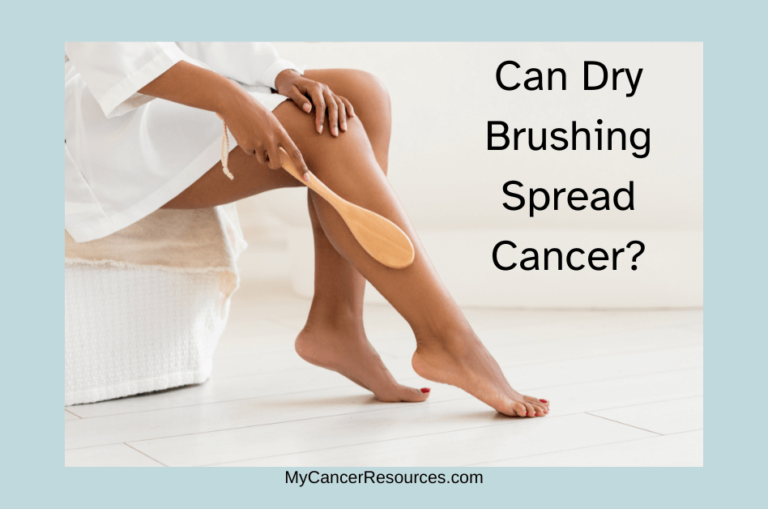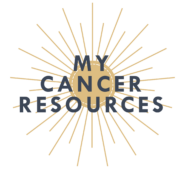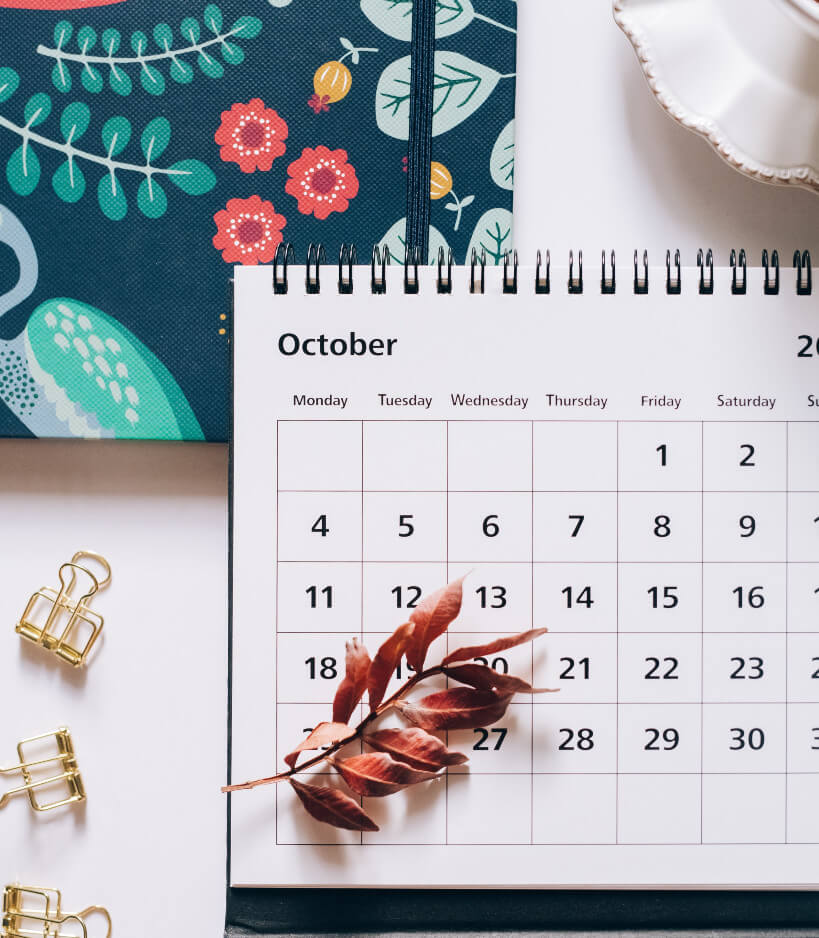
Have you heard of dry skin brushing? Dry brushing is an ancient wellness practice with roots in Ayurveda. It is thought to have many benefits, one of which is improving circulation. But since it helps circulation and moves blood and fluid throughout your body, some have expressed concern and wonder: can dry brushing spread cancer?
This post will explain dry brushing and why it is used, how to incorporate brushing into your routine when you have cancer, and hopefully relieve any fears about the practice spreading cancer to other organs.
(To put your mind at ease, spoiler alert: there is no scientific evidence that dry brushing can spread cancer cells. Keep reading, though, to learn why dry brushing may be a good idea to include in your wellness routine.)
The Skin as a Detoxifying Organ
Did you know that your skin plays an important role in your overall health? As the largest organ in your body, your skin not only protects your skeleton, internal organs, nervous system, blood and veins, but it also helps to detoxify your body. Your skin can help eliminate around a pound of waste products and toxins daily! This natural detox can be halted, though, if you have poor circulation, blocked pores, or a clogged lymphatic system.
This is where dry skin brushing comes in, stimulating not only your skin, but also the lymphatic system underneath.
Understanding the Lymphatic System
Your lymphatic system is an important part of your immune system, designed to protect your body. It’s made up of lymph vessels, lymph nodes and white blood cells known as lymphocytes along with your tonsils, spleen, and bone marrow, among others.
Lymph is a clear fluid that collects bacteria, damaged cells and waste products from your body’s tissues and from fluid that’s leaked from blood vessels so that they can be destroyed or removed from the body. Lymph contains lymphocytes and macrophages, which are both types of white blood cells that help to fight infection.
Lymph drains into lymph vessels, which in turn carry it to the lymph nodes. These are small, bean shaped tissues that are grouped in different parts of your body:
- neck = cervical lymph nodes
- chest = thoracic and mediastinal lymph nodes
- armpit = axillary lymph nodes
- abdomen = mesenteric, para-aortic and peri-aortic lymph nodes
- groin = inguinal lymph nodes
Lymph nodes clean the lymph and increase the number of lymphocytes within the lymph to also attack bacteria and viruses.
Remember the last time you were sick with a sore throat? Your lymph nodes in your neck were likely swollen, right? That’s because they were fighting bacteria or viruses and creating additional lymphocytes to send back out throughout your lymphatic system to fight any other threats to your immune system.
How does the lymphatic system relate to cancer? Lymph nodes act as a sort of checkpoint. They scan the lymphatic fluid for cancerous cells that may be on the move. If detected early enough, these cells can be neutralized, stopping their potential journey to healthy tissues and preventing metastasis.
However, if the lymphatic system is sluggish and the immune system is weakened, there is a risk that cancer cells could move through the lymphatic system and form mets throughout the body.
It’s important to keep the lymph system healthy and moving well so that it can eliminate the toxins and waste from your body.
Traditional cancer therapies, including radiation and chemotherapy leave behind toxins in your body. In addition, you’re exposed to additional radiation from the scans needed to determine how your body is responding to treatment. A strong, healthy lymphatic system can help to remove these toxins from your body.
Also, improved lymph movement means that cancer-fighting cells can travel faster and more efficiently throughout your body.
At the same time, improved blood circulation elevates your body’s overall nutrient and oxygen supply, improving your immune system even more.
What is Dry Skin Brushing?
So what exactly is dry brushing? It’s a wellness practice that involves firmly, yet gently brushing the skin with a natural bristle brush when the skin is dry. The purpose is to brush the skin in long strokes in a particular pattern to stimulate both blood flow and lymphatic vessels, increasing lymph circulation throughout your body.
Dry skin brushing also refines the skin’s surface by eliminating dead skin cells and unclogging pores. This is how brushing works on both internal (lymphatic system) and external (skin) parts of your body to eliminate toxins and improve wellness.
Other reported benefits of dry brushing include relaxation, improving skin tone, a reduction in the appearance of cellulite, and the prevention and/or removal of ingrown hairs.
I’ll go into more details about how to properly dry brush here in a bit, but let’s first focus on the question at hand: is dry brushing safe for cancer patients?
Can Dry Brushing Spread Cancer Cells?
It’s natural to think that since dry brushing helps to move cells throughout the body, they could also transport cancer cells, right?
The general thought is that instead, through dry brushing or other practices to boost the immune system, the lymphatic system can defend your body better against cancer cells from taking hold or metastasizing to other parts of your body. If your lymphatic system is working properly, it should be serving it’s primary purpose, to kill damaged cells and eliminate waste and toxins from your body.
While there haven’t been large, extensive studies on this issue, there is no scientific evidence that points to dry brushing spreading cancer cells, and most healthcare providers do not think dry brushing is a risk factor for developing cancer nor should it necessarily be avoided by someone battling cancer.
However, this may vary depending on your unique situation, so talk to your integrative healthcare provider to make sure it’s safe for you.
Who Should Not Use Dry Brushing?
Dry brushing isn’t appropriate for everyone. You should not practice dry brushing if:
- your skin is overly sensitive from cancer treatment, including chemotherapy or radiation
- you have open wounds on your skin
- your platelet counts are low, since brushing too hard can increase your bleeding risk
- If you have other skin conditions like eczema or psoriasis, as brushing can irritate your skin texture even more
Talk to your provider about whether dry brushing is right for you. If you get the green light to proceed, read on to learn how to get the best results.
Best Techniques for Dry Brushing
It’s important to select a good brush. Pick a natural bristle brush with a long handle. This will make it easier for you to reach all parts of your body. The natural fibers of a stiff-bristled brush allow to you scrub without irritating your skin.
If you select a dry brush and find that the brush fibers are too stiff and irritating and the discomfort isn’t from brushing too vigorously, select a softer brush that is more gentle on your skin.
Start by brushing your lower extremities – your feet and legs – first before moving upwards. Use long strokes and circular motions to promote lymph drainage and blood circulation. Be sure not to apply too much pressure – you want this to be a gentle process, and not end up with raw skin at the end!
The brush strokes should be directed towards your heart to encourage optimal lymphatic drainage and blood flow. So from your lower body, the strokes will go up, and for your upper body, the strokes will go down.
Dry brushing is generally considered safe when it’s done properly with a soft-bristled brush. It is important to avoid sensitive areas of the body and to use gentle pressure when brushing the skin.
If you experience pain, discomfort, skin irritation or bleeding while dry brushing, stop immediately and consult your doctor.
Tips for Dry Brushing
You may want to dry brush your entire body just before a hot shower to help wash away the dead, flaky skin cells that have been loosened during your brushing session.
Don’t brush over sensitive parts of the body or open wounds because this can lead to cuts and infections.
Dry brush your skin no more than once a day, and only for a few minutes at a time. Over-brushing can cause more irritation and damage to the skin.
Wash your brush after each use to keep it from growing bacteria. Let it air dry completely before using it again.
Drink lots of water for the rest of the day after dry brushing to help flush out toxins from the body.
For the best results, make dry brushing a regular part of your wellness routine.
You’ll find the best results if you combine dry brushing with a balanced diet and regular exercise, as these are two other pieces that are critical to having a healthy lymphatic system and good circulation.
How Often Should You Dry Brush?
Start off with dry brush massage just once a week. You can then increase the frequency if you’d like, up to a few times a week or even once a day. Listen to your body and adjust how often you dry brush based on how you’re feeling and how your skin reacts.
Dry brushing too often can irritate your skin, but at the same time, not brushing often enough can not provide your lymphatic system with the support it needs to run efficiently and give you the best benefits.
Most people find that dry brushing two to three times a week works best. Again, listen to your body and talk to your cancer care team if you have questions or concerns.
Final Tips
Some of the benefits of dry brushing include improved blood circulation and lymphatic flow, removal of dead skin cells, relaxation and better skin health. Each of these can help your body remove waste and toxins not just from everyday living, but also toxins from traditional cancer treatments.
You may have concerns about whether dry brushing can spread cancer cells, but rest easy: there is not scientific evidence to back this idea up.
You may want to use caution when dry brushing, especially if you have areas of sensitive skin from chemo or radiation, have open wounds or low platelet count. You’ll want to talk to you cancer care team about if dry brushing could be good for you to incorporate into your routine.
If you do, follow the tips mentioned in this article about using the right brush and listening to your body for guidance on how often to use dry brushing and the right amount of pressure to use to feel benefits while protecting your skin.
Share in the comments below if you’ve tried dry brushing and your experience with it!



